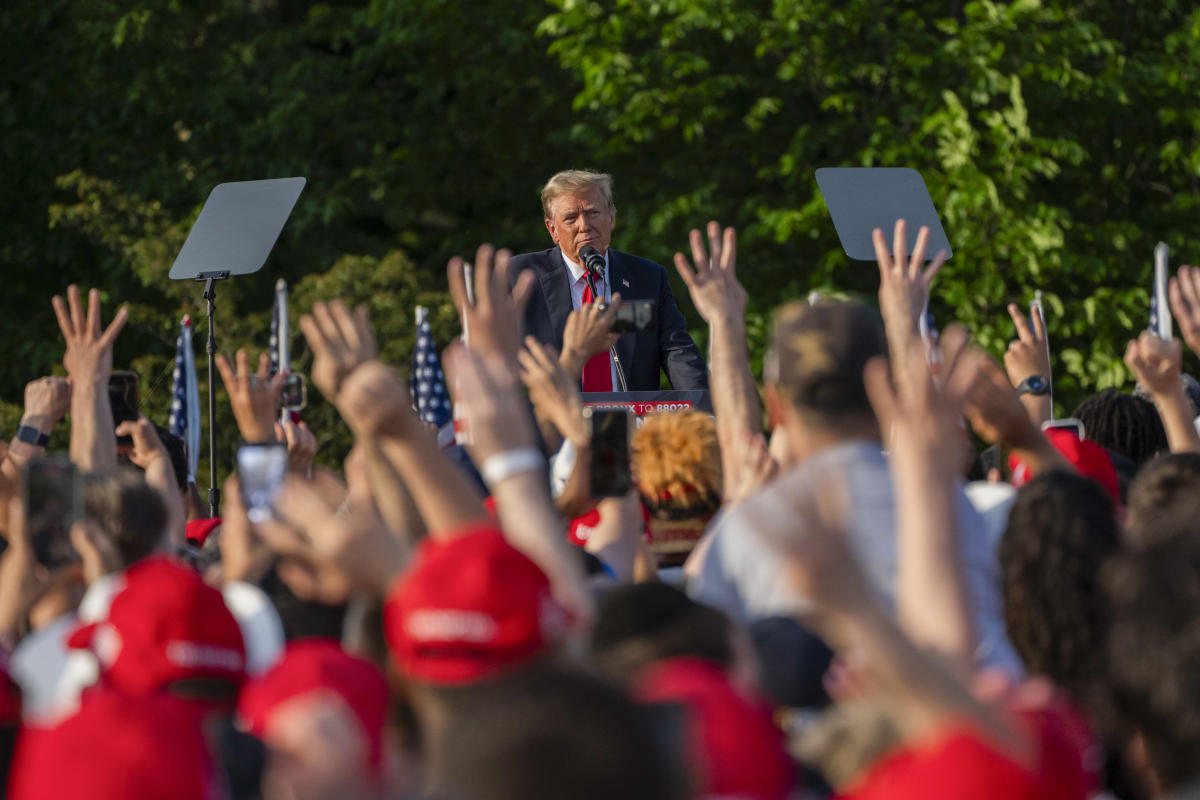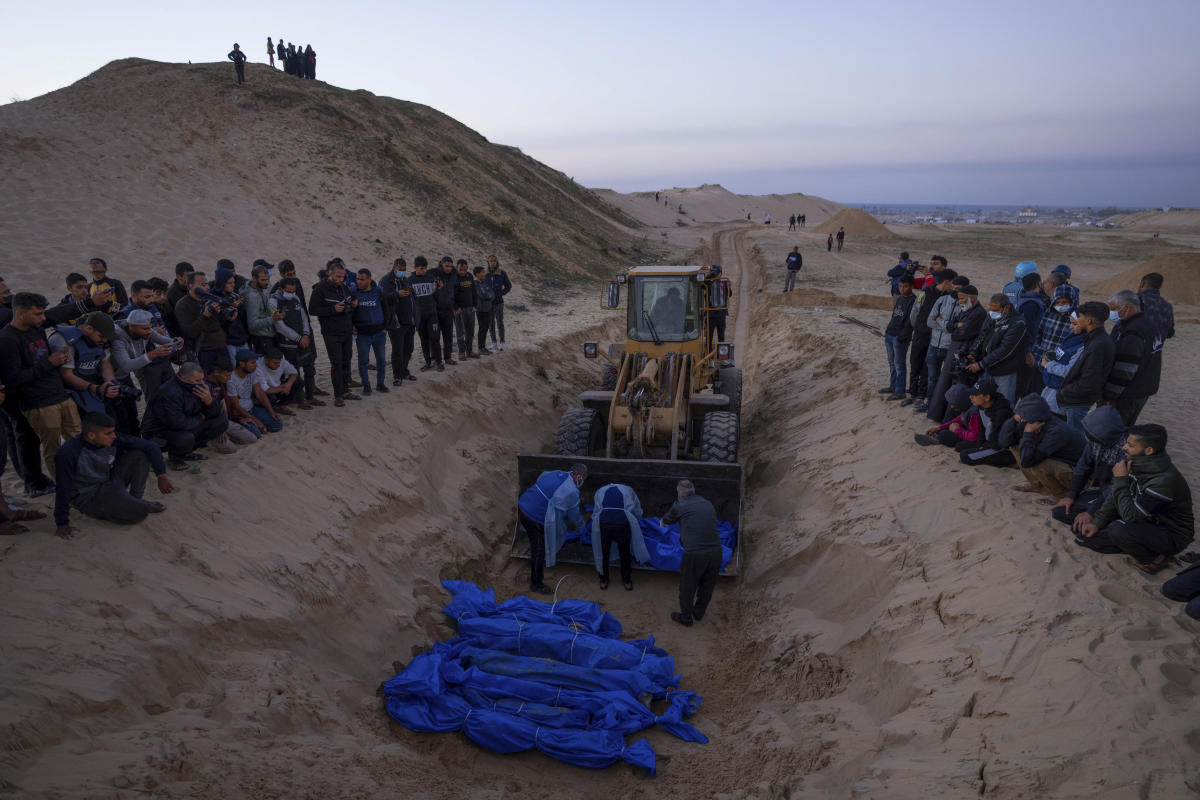NEW YORK — When his criminal trial finishes for the day, Donald Trump typically returns to the marble-and-gold triplex atop Trump Tower, the high rise he built in the early 1980s and used to establish a public image as a master builder.
It is the silver lining for Trump, as he spends his first sustained period of time in Manhattan since he moved to Washington in 2017. He passes the days in a dingy courtroom downtown, where he faces 34 felonies, listening to people from his old life describe him as a depraved liar who sullied the White House. At the end of it all, he could be sent to prison.
Sign up for The Morning newsletter from the New York Times
But in the evenings, people who have spoken to him say, he has been enjoying being back in the penthouse apartment that he moved into four decades ago. He still considers it home — and a permanent reminder of the easiest period of his life.
That period was the greed-is-good era in which Trump sold himself nationally as a titan of industry, despite a relatively small, and local, real estate portfolio. He had just built a glittering tower on Fifth Avenue, infuriating elites and demanding a tax break from the city. And it is the era he alludes to constantly, referring to 1980s cultural touchstones, including the news show “60 Minutes,” Time magazine and celebrities like boxer Mike Tyson.
It is also the last time Trump’s preferred public image was intact, and it soon came crashing down. The decade ended with a monthslong tabloid war in which people around the city chose sides between him and his first wife, Ivana. At the same time, the image-obsessed Trump was the subject of one investigative story after another, making clear he had far less money than it had seemed, had relied on his father for help and had managed his empire into something close to ruin.
It was in the ’80s that he was in a public dance over whether he wanted to be accepted by elites or throw stones at them, marked most visibly by his decision to smash art deco friezes that had been atop the building he razed to construct Trump Tower.
Yet despite the claims that the city’s power brokers all sneered at him, Trump was humored, indulged and even accepted by some of them. The ’80s were a time when, his path having been helped by his father’s connections in the corrupt Brooklyn political machine, he was developing relationships with publishing titans such as S.I. Newhouse and hanging out in the stadium box held for George Steinbrenner, the New York Yankees owner.
Trump had begun a budding and durable association with one of the city’s power brokers, Manhattan District Attorney Robert Morgenthau, a man whose proximity gave Trump a sense of comfort, according to former Trump Organization employees, and who Trump has said would never have stood for the charges against him.
“It’s absolutely true — that was his golden time, no question,” said Andrew Stein, who was the City Council president in the 1980s and still supports Trump after having briefly suggested he should bypass his third presidential campaign.
Even being president — moving to a city and a world where the rules and laws were foreign and uninteresting to him, and where the establishment rejected him before he arrived — rarely seemed to delight Trump the way that holding court at the 21 Club in midtown Manhattan did.
The trial has highlighted the parts of Trump’s makeup that became clear in the decade that followed, in the 1990s, the ones less immediately apparent after the fame afforded him by his ghostwritten 1987 book, “The Art of the Deal.” The courtroom days have repeatedly touched on his penchant for payback, his love of fixers to defend him, his obsession with being seen as a playboy, his business practices at what is essentially a mom-and-pop company.
But they have also underscored the reality that a man who spent years building an artifice about himself in the press and on TV managed to capture the presidency, when suddenly the question of what parts of him were real or fake was obscured by the power of the Oval Office, a giant government infrastructure and tens of millions of people who had cast ballots for him.
The era that shaped Trump was perhaps best encapsulated by author Tom Wolfe in “The Bonfire of the Vanities,” in which a wealthy investment banker strikes a young Black man in a hit-and-run in the Bronx amid widespread racial tensions, and is ultimately tried in the borough’s beaten-down criminal courthouse as the tabloids devour the story.
It was a building not unlike the one in which Trump has sat most days each week for six weeks, the fluorescent lighting beaming down on the decrepit benches and the letters reading “In God We Trust” over Justice Juan M. Merchan’s head.
Some days, Trump has eviscerated his lawyers and complained privately that he has no Roy Cohn, his original fixer and mentor and lawyer. Like Trump, Cohn was born into outer-borough privilege and then alternately reviled and accepted by powerful people. Cohn, a closeted gay man who tried to purge the federal government of gay people, died in 1986; he had AIDS but told people it was liver cancer.
Cohn, whose connections included President Ronald Reagan, Rupert Murdoch and mobsters, had introduced the Queens-bred Trump to a new world and had taught him to always deny wrongdoing, to attack his attackers and to seek lawyers willing to do anything. But at the start of the ’80s, as he was gaining respectability himself, Trump already seemed ready to put some distance between himself and Cohn.
“All I can tell you is he’s been vicious to others in his protection of me,” Trump told journalist Marie Brenner a few years before Cohn’s death. “He’s a genius. He’s a lousy lawyer, but he’s a genius.”
Trump essentially dropped Cohn, who had been indicted repeatedly, when he fell ill. It was later that Trump lionized Cohn, despite his own criticism of his mentor, as the ideal that his other lawyers, including the new ones he dealt with in Washington, should strive to live up to.
Trump never spent much time back at Trump Tower while he was president. Most weekends, he traveled to Mar-a-Lago, in Palm Beach, Florida, or to Bedminster, New Jersey. He said he was avoiding Manhattan because his motorcade would snarl traffic. But Manhattan had rejected him at the ballot box. Residents had even laughed in his face as he went to vote on Election Day in 2016; one told him, “You’re gonna lose!”
And so in September 2019, after consulting his tax lawyers, Trump rejected Manhattan right back, switching his residence to Florida. By the time he left office, 14 days after an attack on the Capitol by a pro-Trump mob, he was close to done trying to appease anyone but himself.
This month, the former president and presumptive Republican nominee has sought to troll the city he left, to show he can still dominate a place that, in the post-pandemic period, has continued to feel off-kilter.
On Thursday evening, he held a rally of thousands of people not in Manhattan but in the Bronx. The event was in a heavily Black and Latino neighborhood, in a borough where Trump went to college at Fordham University for two years, and where Cohn’s former law partner was once a Democratic Party leader. Trump had suggested to donors at a Manhattan fundraiser days earlier that he might get hurt in the neighborhood, although he seemed quite pleased once he was there.
He denounced transgender girls and women competing in women’s sports, to cheers. He attacked immigrants who entered the U.S. illegally, whose growing use of city services has been a flashpoint.
But the theme of his stories was the past. He talked about building Trump Tower, declaring, “Wherever I go, I know that if I could build a skyscraper in Manhattan, I could do anything.”
He lingered for several minutes describing how he rebuilt the defunct Wollman Rink in Central Park in 1986, a relatively small job that he nonetheless milked for intense media coverage. He detailed the copper pipes that had been stolen and the concrete wasted, and then he said he had found a way to turn the rink into something different.
“The biggest cost was demolition,” Trump said of his work. “Taking it down and then starting all over.”
c.2024 The New York Times Company

Amanda Smith is a dedicated U.S. correspondent with a passion for uncovering the stories that shape the nation. With a background in political science, she provides in-depth analysis and insightful commentary on domestic affairs, ensuring readers are well-informed about the latest developments across the United States.








